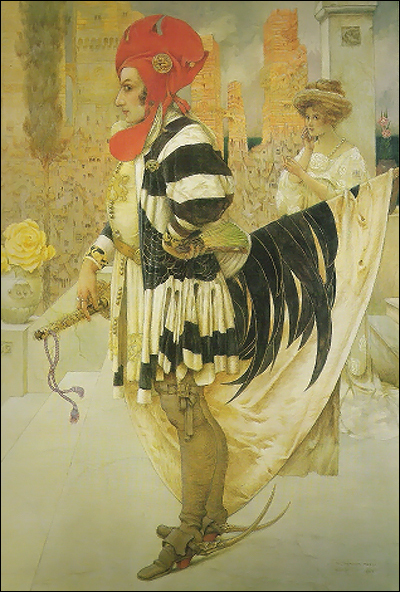
The Cock and the Pearl by Gustav Adolf Mossa
Gustav-Adolf Mossa’s paintings are subversive, playful and unforgettable. There is so much detail in each of these works, and while everything is stylized there is still emotional presence. You might recall one of his pieces from the Pierrot post last week. Intrigued by the concept of the Femme Fatale, much of his work features beautiful and somewhat tragic female heroines, often taken from myth or literature. There is also a certain distaste for Catholicism and fascination with perversion – Mary Magdalene climbs half-nude atop Christ’s crucified body, a noble woman powders her face beside a fetus in a jar, Helen tenderly kisses a corpse. Nudity and fatality aplenty!
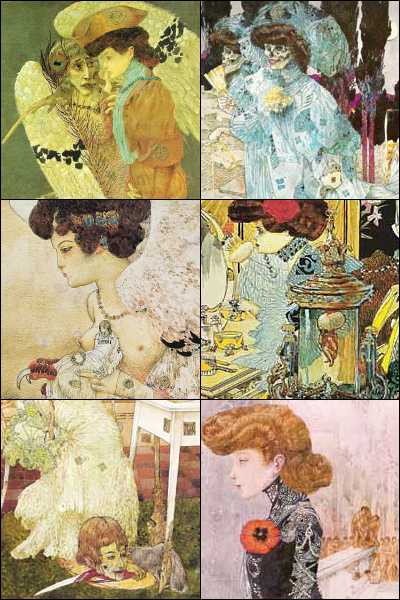
Oddly, very little information is available online about this Symbolist painter. What my questionable French has allowed me to decipher from bits and pieces follows. Gustav Mossa, (1883-1971) was inspired by the work of Baudelaire among other authors, and his style takes its influences from Art Nouveau and the Preraphaélites. Marchesa Luisa Casati was one of his patrons, though I’ve yet to find a depiction of her in his work. He worked nonstop for fifteen years, 1903 to 1918, and then stopped suddenly, producing nothing but gaining popularity.
Thirty-eight of his major works are on display in The Fine Art museum of Nice. I did manage to find an online gallery of Mossa art here, a few more here, and there are more not entirely safe for work images beyond the jump – enjoy!
Posted by Zoetica Ebb on December 28th, 2007
Filed under Art, Surreal | Comments (10)
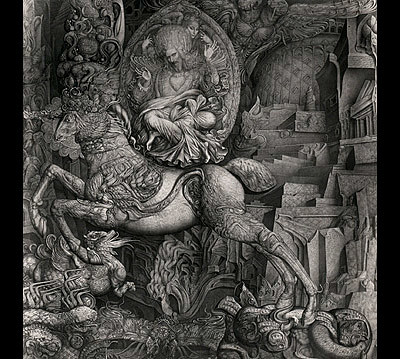
“I don’t think that art, if it’s isolated and specialized, can really create culture. It needs a cult.” – Ernst Fuchs
Ernst Fuchs is a man of many talents; he’s taken turns as a painter, draftsman, printmaker, sculptor, architect, stage designer, composer, poet and singer. Born in 1930 and still working today in Vienna, Fuchs is a strong proponent of fantastic and often disturbing art that’s all over the map, thematically and stylistically.

Left: David and Bathshebah. Right: Ernst Fuchs.
Some of Fuchs’ paintings make him look like a deeply religious man, others make it seem like he’s a total heathen. There are the hyper-detailed, religious-themed, Durer-inspired etchings and brush drawings: my favorite of these is Satan’s Heaven, created in 1954, along with Christ Before Pilate and Ahasverus Repudiates Vasthi. Not since Bosch has religion looked so satisfyingly demonic! Parallel to the his tormenting depictions of the Bible, there are many mythological themes: his Procreation of the Unicorn/Temptation of the Unicorn/Triumph of the Unicorn series is not to be missed; unicorn chaser it’s not!
Posted by Nadya Lev on December 26th, 2007
Filed under Art, Surreal | Comments (10)
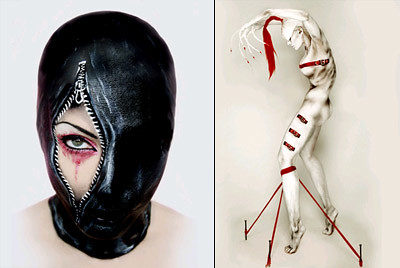
Making still images with bodypaint is becoming a bit of a lost art in the age of Photoshop. Why sit there and paint on someone for 13 hours, a nightmare of smudges and sore muscles, when you can just copy, paste and apply a mask? Body painter Nelly Recchia would explain that it’s the same as digital video vs. film; each is a legitimate medium, but that sometimes the “old way” of doing something can bring out a certain depth that you just can’t achieve with easy new techniques.
To Recchia, body painting is a ritualistic act, dating to the prehistoric age, which communicates our desire to transform ourselves and transcend the human body. She does use Photoshop occasionally, but only for minor corrections; the bulk of the work has to be done with models posing the same way for hours, a task that requires patience and strength. In the end, the models in her work glow with a type of poised discipline that Photoshop could never give.
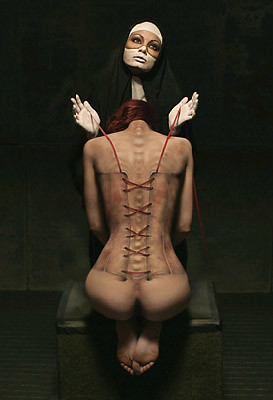
Posted by Nadya Lev on December 24th, 2007
Filed under Art, Fetish, Photography | Comments (3)
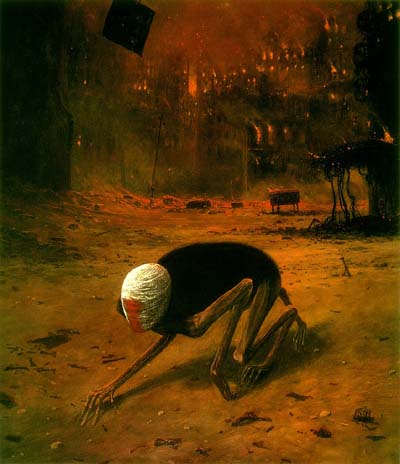
Artist Zdzislaw Beksiński is best known for his immense, obsessively detailed paintings of catastrophic landscapes, surreal humanoid figures and afflicted nudes. Born in 1929, he grew up in southern Poland, then traveled to Krakow to study architecture where he subsequently spent several miserable years working as a construction site supervisor. His work from that era is primarily photography and sculpture.
In his mid thirties, Beksiński shifted his focus to painting large, purely abstract pieces on wooden boards (he preferred wood to canvas). Eventually, their form and structure became more straightforward and he entered a self-proclaimed “fantastic period” reminiscent of Bruegel, Ernst or Bosch, and drawing comparisons to his Swiss contemporary, H.R. Giger.

Beksiński’s post-apocalyptic vision, much like Giger’s, is uniquely disturbing owing in part to a highly developed architectural eye. His manipulation of scale and manic overworking of texture is ingenious. Overwhelmingly huge structures rise up from dust or empty desert. Sinewy figures cavort under ominous skies.
Posted by Meredith Yayanos on December 22nd, 2007
Filed under Architecture, Art, End of the World, Horror, Sci-fi, Surreal, Uber | Comments (60)
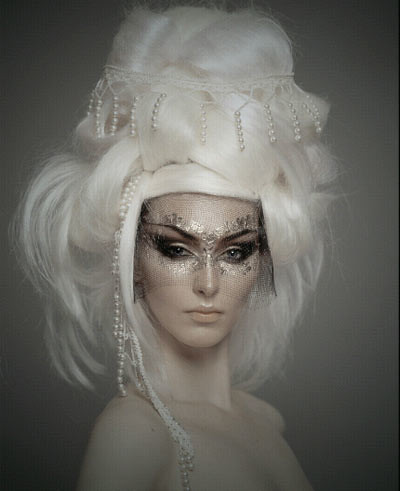
I love this photo by Hyperion for its milky, opalescent quality. Most “scene portraits” try to be loud and in-your-face, so it’s interesting to see portraits that are so muted that still manage to resonate a great deal of strength. Hyperion shoots mostly on film and uses sculptural hairpieces to fill up the square compositions. I sometimes disagree with the makeup choices in his images, but when it all comes together, it’s pure magic.
Posted by Nadya Lev on December 21st, 2007
Filed under Art, Goth, Hair, Photography | Comments (3)
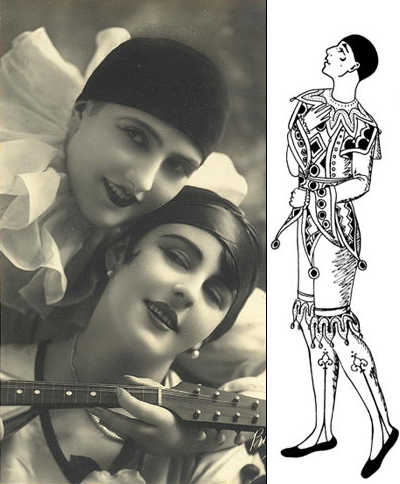
Pierrot was my first crush, and I mean the very first one, the one before real life boys, girls, etc. It all began with a life size doll [the size of a 6 year old anyhow] of a crying jester. More of a fusion of Pierrot and Harlequin, he had long noodly limbs, painted fingernails and a white made up moon-face with permanent blue teardrops slightly raised on the plastic surface. I assigned him a variety of appropriately tragic personalities in accordance with whatever game I was playing that day.
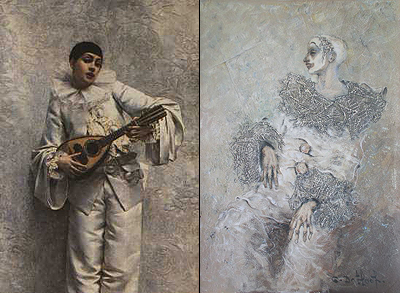
The name “Pierrot” didn’t hold any meaning until I read Buratino – Tolstoy’s version of Pinnochio. He was Buratino’s dismal friend, eternally pining for Malvina the blue-haired doll. I was smitten by his dapper costume in the 1975 film version of the book. The magnificent ruff and floor-length sleeves on the squeaky pallid boy left a permanent impression.
Posted by Zoetica Ebb on December 19th, 2007
Filed under Art, Fairy Tales, Goth, Silly-looking types | Comments (12)

That was the Tank Girl of the 90s, the one I fell in love with. We didn’t hear from her for over a decade, but this year she re-emerged in The Gifting, a new series by Alan Martin (the original creator) and illustrator Ashley Wood. What does the Tank Girl of 2007 look like? Alan Martin had the following to say:
Here’s the emerging new look for Tank Girl. We were concerned that she didn’t make her re-appearance in the same, tired old clothes that she bowed out in some twelve years ago. What was alternative, upsetting, anarchic, and just plain odd-ball back then has since become common place. Mainstream media smothers us daily with punky chic, and modern day babies can be seen sporting spikey hairdos and Travis Bickle T-shirts. The uniform of the cultural revolutionary has been sold to The Man. So how to rebel? How give the finger to the fashion fascists? Normal is the only way ahead. Dress like a high school teacher from the mid-eighties, or pick clothes from your boring aunty’s wardrobe. The only way left to rebel is to dress like you’re not rebelling. We hope to bring a whole different flavour to Tank Girl, as she borrows ideas from past cultural reference points (Fay Dunaway in Bonnie & Clyde, anyone?).
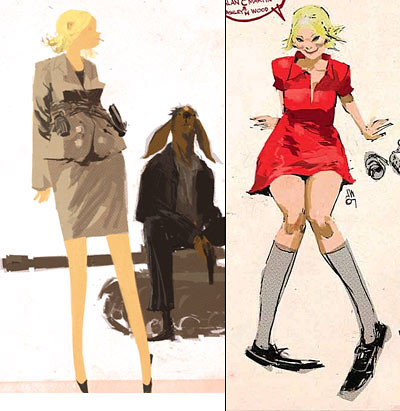
I completely feel what Alan Martin is saying. I like the look of the new Tank Girl drawings. However, the old-school, combat-boot-wearing, band-aid-covered, baseball-bat-wielding, kinda-dykey Tank Girl of yore will always hold a very dear place in my heart.
I’ll come out and say it: I love Ashley Wood’s amazing drawing style, but the new Tank Girl look doesn’t really do it for me. Maybe I’m being way too nostalgic, but it’s also possible that what I’m reacting to is the idea that so many people have decided to rebel by not-trying-to-look-rebellious that it’s starting to look like an easy way out of any real effort. I’m not saying that to undermine Martin’s very important message (see our Hot Topic Rebranding post), but it may be possible that so many people have caught onto the “rebel by looking normal” notion, and so many are using it to lazily avoid any attempts at interesting self-expression through clothing, that I’m just hoping that the pendulum swings back to the other side. You know, the side with the band-aids and corrugated tubing and knee pads.
But I guess I should get over it and enjoy the story. Comic book characters change, if it’s a good comic. When Maggie from Love and Rockets gained weight and creator Jaime Hernandez insisted that this was the way that Maggie was meant to be, I thought that was incredibly touching and honest. It’s impossible to keep up a certain look forever, and the story can be just as interesting once that look is gone.
Posted by Nadya Lev on December 18th, 2007
Filed under Art, Culture, Fashion, Grrrl, Punk | Comments (21)
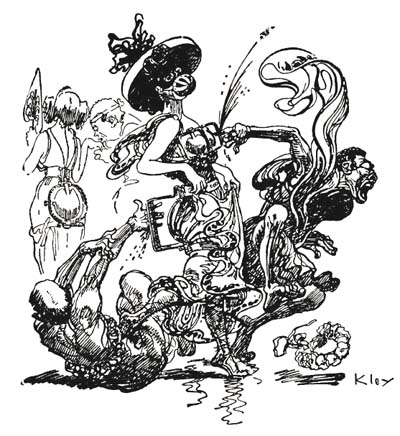
The greater the draftsman, the more the artist can suggest with the least number of pen strokes. He knows beforehand where each line will touch the paper and why. Each line and dot will convey large areas of figure or scene, and the true artist/draftsman can relate his imagination to the viewer. Add to this one other quality the rare attribute of satirical humor and you have one of the greatest draftsman of this century: Heinrich Kley. -Donald Weeks
It’s amusing that Heinrich Kley earned his college degree studying the “practical arts” when one considers the decidedly impractial nature of the artist’s most famous work. Although Kley’s technical prowess always set him apart, his early paintings of landscapes and still life subjects are nothing to write home about. It wasn’t until the turn of the 20th century –while Germany scrambled to catch up to the rest of the swiftly industrializing world– that Kley’s own work took some fascinating turns.
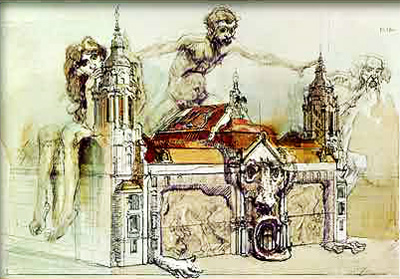
Posted by Meredith Yayanos on December 15th, 2007
Filed under Art, Books, Fairy Tales, Industrial | Comments (3)
What do S&M, Udo Kier and puppy fucking have in common? So glad you asked! They’re all in Madonna’s Sex book, see. Say what you want about her current honey locks and spandex ass, back in the 90s this woman owned.
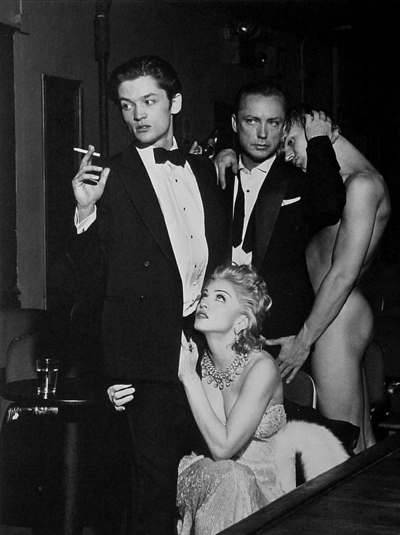
Owned with a capital “O”, no matter what it took as this book goes to some length to prove. Inside the brushed metal cover are photos in Steven Meisel’s signature iconic style alongside some fairly gritty fetish scenes, all accompanied by erotic writing by Madonna herself.
Clickng below probably not safe for work, as you might have guessed.
Posted by Zoetica Ebb on December 14th, 2007
Filed under Art, Fetish, Photography, Stroke Material | Comments (11)
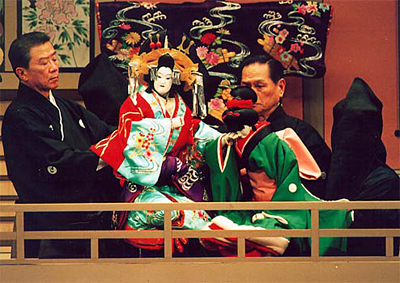
A puppet can sometimes express more with a tilt of her head than we do with several sentences. I was introduced to Bunraku when I watched Takeshi Kitano’s Dolls. The film’s storytelling is interspersed with scenes from a Japanese puppet play. The mix of dramatic narration, movement and beautiful costumes of the dolls immediately became a point of interest. Bunraku originated sometime in the 1600s, thought wasn’t called that until the 1800 after a theater in Osaka. It’s a well-loved traditional art form – puppet plays accompanied by shamisen music and fantastic narrations, that use complex life-size dolls operated by three masters.
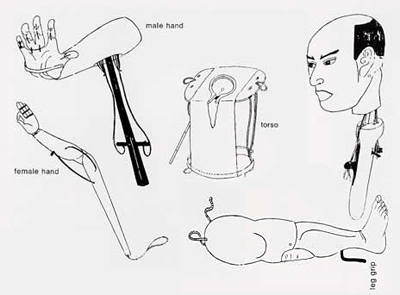
The music ascends, building to manic excitement and subsides into sparse tranquil strumming in accordance with the play. The narration, performed only by men, aligns its melodies to the shamisen’s and is adjusted in pitch and tone, ranging from guttural to somewhat feminine. The dolls themselves are sophisticated creations of carved wood, the males equipped with expressive facial mechanisms, and the women mask-like and even more expressive through gesture, instead. Sets used in Bunraku are design masterpieces, minimally conveying any location necessary, rearranged throughout the show by fully-masked attendants.
Posted by Zoetica Ebb on December 10th, 2007
Filed under Art, Fairy Tales, Japan, Puppetry | Comments (4)




















